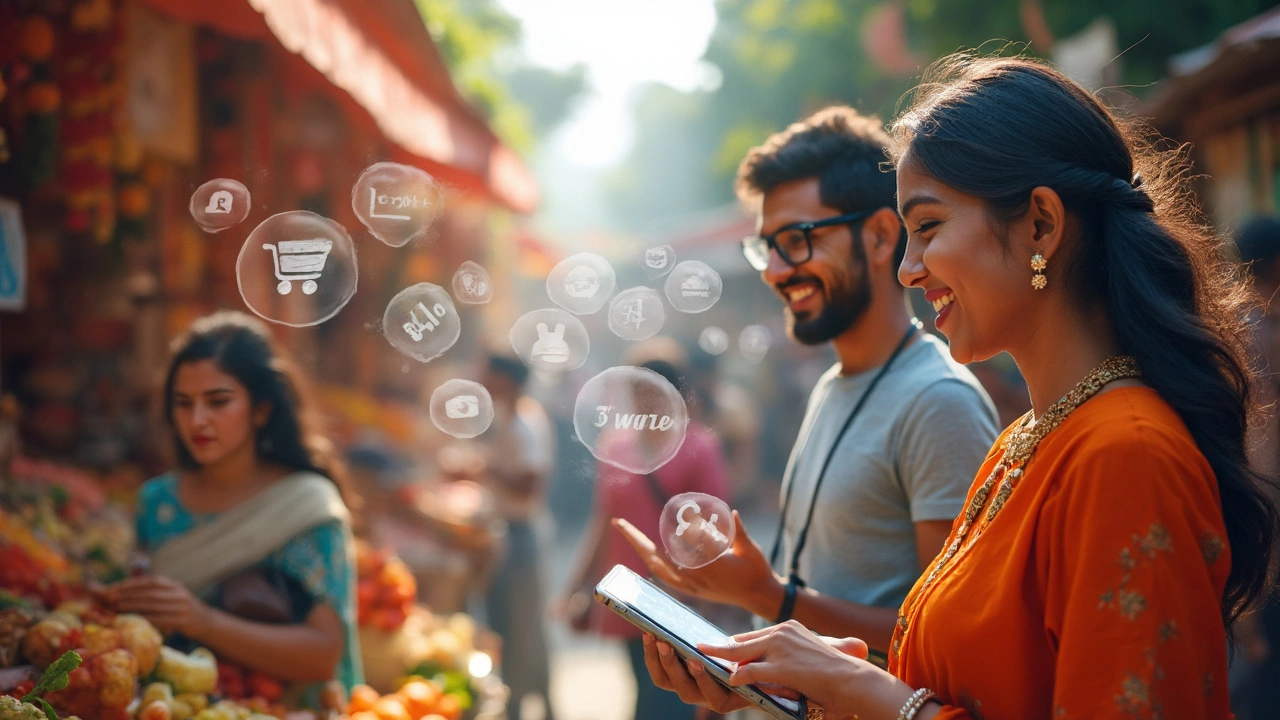Try picturing life without digital platforms. You want to order food but can't hop on to Uber Eats. You need to send money, but there's no PayPal. You want to join a class, but Zoom simply doesn't exist. It's wild to think about how deeply e-platforms have wedged themselves into the fabric of our day-to-day routine. For me and my mate Anaya, e-platforms have changed the way we hire cleaners, buy groceries, and even book dog walkers in Sydney. Sounds straightforward, right? But beneath the surface, there's a whole world buzzing with connections that run way deeper than clicking a couple of icons.
Unpacking the Meaning: What Exactly Is an E-Platform?
At its core, an e-platform (short for electronic platform) is like a digital stage where people, businesses, or software interact, share, or trade things—without needing to sit in the same room. It's easy to think only of e-commerce giants like Amazon or eBay, but the definition covers way more ground. Picture anything from a messaging app like WhatsApp, a learning site like Coursera, to cloud-based tools like Google Drive. Each of these gives people a space to connect or complete tasks online. The big advantage? You don't need a fat wallet or fancy hardware—just the internet and a device that connects. E-platforms have become so versatile, you can run your entire startup from a Mediterranean beach (or, more realistically, a Sydney coffee shop with decent Wi-Fi).
Platforms can be general or super-niche. LinkedIn, for example, focuses on professional networking, while AirTasker links you up with people to assemble your IKEA bed or mow your lawn. There are creative platforms, like SoundCloud for music, Behance for design portfolios, and endless ones for gamers, writers, students, and teachers. Even governments use e-platforms for services—renew a driver’s license without lining up for half the day. The thing all true e-platforms have in common is the role of the middleman, making interactions possible, smooth, and sometimes even fun.
Different Types of E-Platforms and What Makes Them Tick
If you've spent an evening mindlessly swiping on Netflix or shopped during a midday slump, you've used an e-platform. But not all platforms are built alike. Let's break it down.
- E-commerce platforms: Amazon, eBay, Shopify – these sites let people buy, sell, or auction stuff globally. The platform handles payments, listings, and reviews, while users supply the products.
- Social and communication platforms: Think Facebook, Instagram, Telegram, or Discord. They connect billions, help circulate new ideas, and, occasionally, ruin family dinner conversations.
- Learning platforms: Sites like Coursera, Udemy, and Khan Academy make it possible to earn professional certificates or new skills from home. Schools lean hard into Google Classroom or Microsoft Teams these days, too.
- Service platforms: These connect you with service providers. Picture Airbnb for travel, Uber for rides, or Upwork if you need a freelance designer.
- Financial platforms: Banking and payment apps like PayPal, Revolut, or M-Pesa let you transfer cash, pay bills, or invest without stepping into a bank.
Behind every smooth tap or click is some heavy tech lifting. E-platforms use cloud infrastructure to keep everything ticking 24/7, algorithms for personalising your feed, and tough security to keep your data safe. Most follow the 'platform model', acting as a bridge between two or more groups — sellers/buyers, teachers/students, landlords/tenants, you name it — and profit by taking a cut or offering premium features.

Why E-Platforms Are So Popular: Surprising Stats and Real-Life Stories
Chances are, if you took a survey of your screen time last week, e-platforms would gobble up a hefty chunk. Look at these numbers:
| Platform | Monthly Active Users (2025) | Fun Fact |
|---|---|---|
| 3.18 billion | 5 new accounts are created every second | |
| Amazon | 430 million | Delivers to 180+ countries |
| Zoom | 300 million* | Boomed by 3000% during the pandemic |
| Spotify | 602 million | Over 100 million tracks available |
* "Meeting participants" not unique users, but still mind-blowing.
But numbers only tell half the story. I know a neighbour who launched her candle-making business using Etsy during lockdown. With just an internet connection and some creativity, she built a loyal customer base from Perth to Paris. Or Anaya—she’s found communities to swap pet advice and even tracked down her childhood friend living in Melbourne, all through digital platforms. The thing is, e-platforms remove the heavy barriers; you can take your skills, goods, and opinions global without complicated logistics or a suitcase full of business cards.
What draws people in? Mostly, it's about saving time, cost, and effort. No one wants to fill forms in triplicate or wait on hold forever. E-platforms strip away layers of middle management, hand more choice to users, and turn feedback into online reviews everyone can see. Plus, it's easy to compare prices, spot trends, or get instant support at 2 a.m. — something brick-and-mortar services just can’t match.
How E-Platforms Work: The Magic Behind the Screens
The beauty of an e-platform is you rarely see the nuts and bolts. You just log in, click around, and get things done. But there’s a clever system underneath that juggles data, security, and crazy amounts of traffic 24/7. Here’s what’s actually going on:
- User Interface (UI): This is how you interact with the platform—the buttons you press, the menus you flick through, the chat windows you type in. Good UI keeps things simple and intuitive.
- Backend Servers: All those pictures you post, songs you stream, or payments you make go through hidden servers. Think of this as a super-organised library where your stuff is stored and fetched whenever you want it.
- Algorithms: These are smart rules that decide what you see, recommend shopping picks, or suggest friends. If Netflix keeps suggesting crime documentaries after that one late-night binge, it’s not a coincidence.
- Security Protocols: Nobody wants their details stolen. E-platforms use encryption to scramble your data, two-step verification for logins, and real-time alerts if anything suspicious pops up.
- APIs (Application Programming Interfaces): These let different platforms talk to each other—so you can log in with Google on new sites, or link your Spotify playlist with your Instagram Story.
Let’s not forget customer support bots, real-time notifications, and payment gateways swirling in the background. Most platforms update their code weekly (sometimes daily) to roll out new features or squash bugs. The teams working on these updates span continents—developers in India, designers in Berlin, testers in Sydney. No matter the time zone, someone’s making improvements to keep up with how people use the platform.

Tips to Make the Most Out of E-Platforms in Everyday Life
With new platforms launching every week, it’s easy to lose track or get overwhelmed. Here are some ways to get the best out of them without the stress:
- Check reviews before you commit: Whether hiring a gig worker or trying out a new course, reviews are gold. Don’t just look at star ratings—read the details to catch any red flags.
- Protect your privacy: Use strong passwords, enable two-factor authentication, and be careful what personal details you share. Not all platforms vet their sellers or users equally well.
- Try free or trial versions: Most platforms offer a blank-cheque free trial. Take advantage—see if it actually suits your needs before you punch in your card number.
- Keep software updated: Updates aren’t just about new emojis; they plug security gaps. Turn on auto-update wherever you can.
- Customize notifications: Endless pings and pop-ups? Dig into your settings and shut off the noise that doesn’t help you.
- Explore niche options: There’s often a platform tailored for your exact hobby, from home brewing to drone flying. Don’t settle for whatever’s most popular unless it actually clicks for you.
- Read the fine print: Some platforms sneak in fees, auto-renewals, or tricky terms. It’s boring, but knowing what you’re signing up for can save you cash and headaches.
- Stay alert for scams: Use secure payment methods, double-check unusual requests, and never share sensitive info through unofficial channels. If it sounds too good to be true, it usually is.
I keep a shortlist of reliable e-platforms handy, and every six months or so, I try a new one—just out of curiosity. It’s helped me discover time-saving services, fresh music, and DIY guides that would’ve been buried in a search engine.
As digital tech keeps evolving, expect e-platforms to only get smarter, quicker, and even more woven into our daily routines. Whether you're managing a team remotely, raising funds for a cause, or hustling a side gig from the comfort of your flat, e-platforms are the secret sauce behind it all. And the wildest part? The next big thing is probably just a click away, ready to flip the script all over again.






Write a comment: